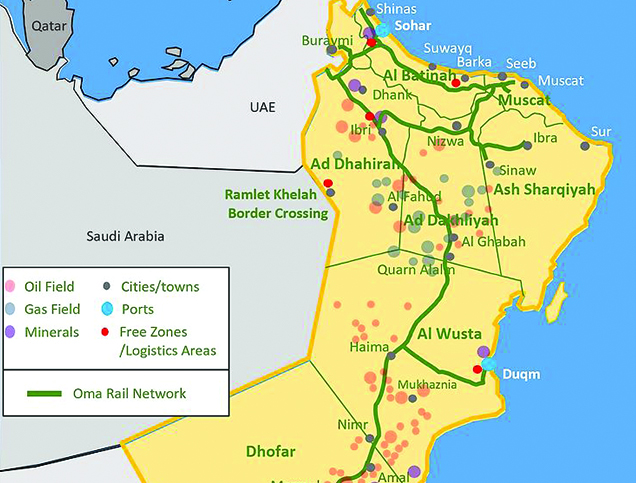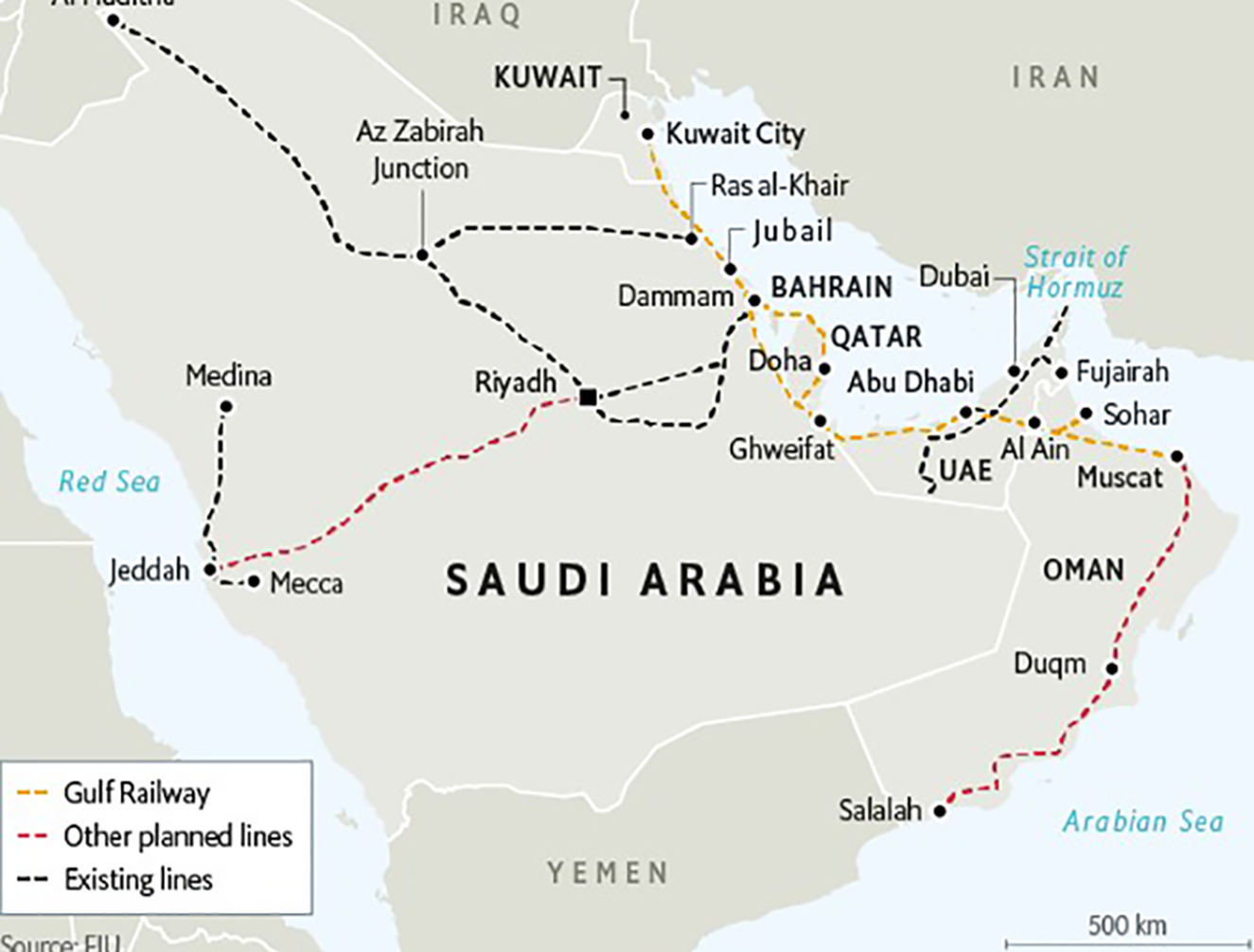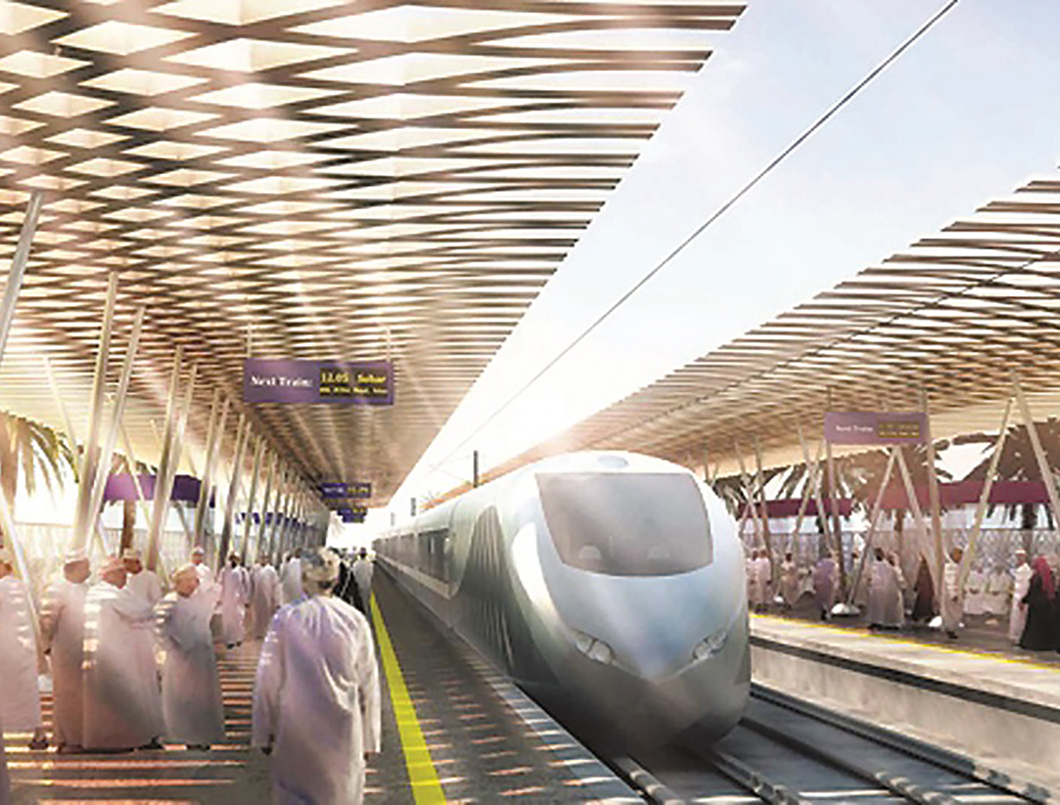
Close
responsive-lightbox domain was triggered too early. This is usually an indicator for some code in the plugin or theme running too early. Translations should be loaded at the init action or later. Please see Debugging in WordPress for more information. (This message was added in version 6.7.0.) in /home/kiju52ce/public_html/development/wp-includes/functions.php on line 6114updraftplus domain was triggered too early. This is usually an indicator for some code in the plugin or theme running too early. Translations should be loaded at the init action or later. Please see Debugging in WordPress for more information. (This message was added in version 6.7.0.) in /home/kiju52ce/public_html/development/wp-includes/functions.php on line 6114
Approach Words: Efficiency, Integrated City, Sustainability
Public Policy Instruments: Financial Mechanism, Organization, Physical Intervention, Planning
Oman National Railway Project is a railway transportation network1 2 that runs across Oman, designed for both passenger travel and freight trains. It is initiated by the Oman Railway Companyi, founded in 20143 as a premier national company aims at connecting people4, trade and businesses within Oman as well as with the wider Gulf Cooperation Council (GCC) regional network. The project aligns with the Oman Railway Company’s vison to “Establish a solid and efficient rail network system that bolsters the logistics industry’s share of the GDP, and positions Oman as the leading regional logistics gateway”5. The key goals of the Oman National Railway Project are to ensure a connected, prosperous and diversified6 economy, as well as promote sustainable urban expansion through7:

Title: A map showing the Omani railway network in relation to the ports, cities, free zones, and oil, gas and mineral resources in Oman.
Source: Click Here

Title: Overview Of GCC railway mainline and domestic rail network in Oman.
Source: Click Here

Title: The Oman-UAE rail line links Sohar to Abu Dhabi.
Source: Click Here

Title: Part of The UAE and Oman 303-kilometer rail network.
Source: Click Here
The proposed Oman rail network map spans 2,224 kilometers10, crossing through mountains and deserts11. It is designed for high-speed trains traveling at up 350 kilometers per hour for passenger transport and 200 kilometers per hour for freight12. The network comprises a double track system with standard 1,435 mm gauge13. It includes 46 stations, eight marshalling yard, and nine intermodal yards connecting Oman’s major ports and cities, such as Muscat, Sohar, Duqm and Salalah as well as mineral resources to United Arab Emirates’ borders14 15. The trains will operate on electrical power, supplied by electrical infrastructure that will be built along the entire length of the network16.
The Oman railway network has been divided into nine Segments17 planned to be constructed over nine phases. However, the key four phases are:


Consultant/Designer
The project is initiated and developed by Oman Railway Company, part of ASYAD Group22 iii, established by Oman Ministry of Transport and Communications23 that signed a contract with Italferr for the preliminary design of the entire railway network of the Sultanate of Oman24. Oman rail company is responsible for the project implementation25 where the overall estimated project cost $15bn26 funded by the State of Oman27which is Oman Global Logistics Group (OGLG)/ ASYAD28 and Asian Infrastructure Investment Bank (AIIB)29.
Additionally, Oman Rail signed an agreement with Etihad Railiv, the developer and operator of the UAE national railway network, to establish the Oman and Etihad Rail Company. With a total value of $3 billion USD, this business is a joint venture that is co-owned by the two countries to build and operate a 303 kilometers efficient railway network30. The network will link Sohar Port to the UAE National Rail Network in 100 minutes31. It will have two tracks for both freight and passenger travels, with speeds up to 200 kilometers per hour for passenger trains and 120 kilometers per hour for freight trains32. The landmark agreement aims to accelerate the expansion of each nation’s economy by increasing market competitiveness, lowering supply chain costs overall, and facilitating cross-border trade. Specifically, it will connect commercial ports to the railway network, which should boost trade flows between the two countries and the gulf region33.
Project Link
Endnotes
References